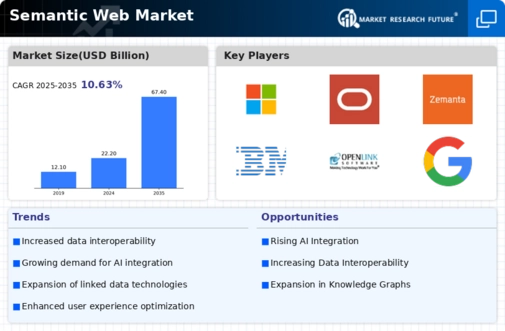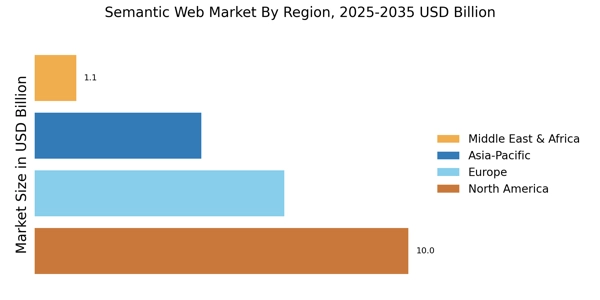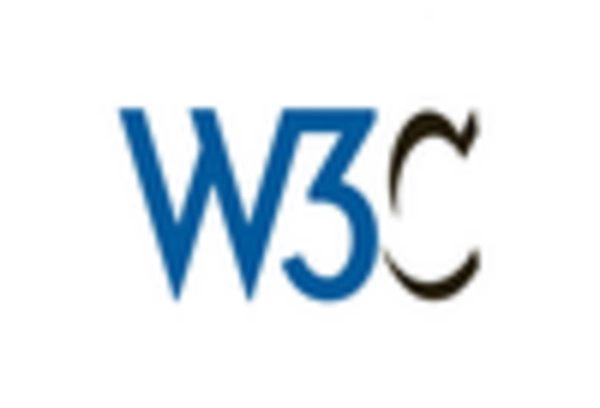The Semantic Web Market is currently characterized by a dynamic competitive landscape, driven by the increasing demand for enhanced data interoperability and intelligent information retrieval. Major players such as Google (US), Microsoft (US), and IBM (US) are at the forefront, leveraging their technological prowess to innovate and expand their offerings. Google (US) focuses on integrating semantic technologies into its search algorithms, enhancing user experience through more relevant search results. Meanwhile, Microsoft (US) emphasizes the development of its Azure cloud platform, incorporating semantic web technologies to facilitate better data management and analytics. IBM (US) is strategically positioning itself through partnerships and acquisitions, aiming to bolster its AI capabilities and expand its semantic web solutions. Collectively, these strategies indicate a trend towards a more interconnected and intelligent web, where data can be seamlessly shared and utilized across various platforms.
In terms of business tactics, companies are increasingly localizing their operations to better serve regional markets, optimizing supply chains to enhance efficiency. The competitive structure of the Semantic Web Market appears moderately fragmented, with a mix of established giants and emerging players. This fragmentation allows for diverse innovations and solutions, although the influence of key players remains substantial, shaping market trends and consumer expectations.
In August 2025, Google (US) announced the launch of its new semantic search feature, which utilizes advanced AI algorithms to improve the accuracy of search results. This strategic move is significant as it not only enhances user engagement but also positions Google (US) as a leader in the integration of AI with semantic technologies, potentially increasing its market share in the competitive landscape.
In September 2025, Microsoft (US) unveiled a partnership with a leading data analytics firm to enhance its semantic web capabilities within the Azure platform. This collaboration is crucial as it allows Microsoft (US) to leverage external expertise, thereby accelerating the development of innovative solutions that cater to the growing demand for data-driven insights in various industries.
In July 2025, IBM (US) completed the acquisition of a semantic technology startup, which specializes in natural language processing. This acquisition is likely to enhance IBM's (US) existing offerings, enabling the company to provide more sophisticated semantic web solutions that can better understand and process human language, thus improving user interaction and satisfaction.
As of October 2025, the competitive trends in the Semantic Web Market are increasingly defined by digitalization, sustainability, and the integration of AI technologies. Strategic alliances are becoming more prevalent, as companies recognize the need to collaborate to stay ahead in a rapidly evolving landscape. Looking forward, competitive differentiation is expected to shift from traditional price-based competition towards innovation, technological advancements, and the reliability of supply chains. This evolution suggests that companies that prioritize these aspects will likely emerge as leaders in the Semantic Web Market.


















Leave a Comment